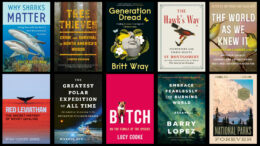Summer is normally beach-read season, the time of year when publishers pump out potboilers and steamy romances to fill the sun-drenched days.
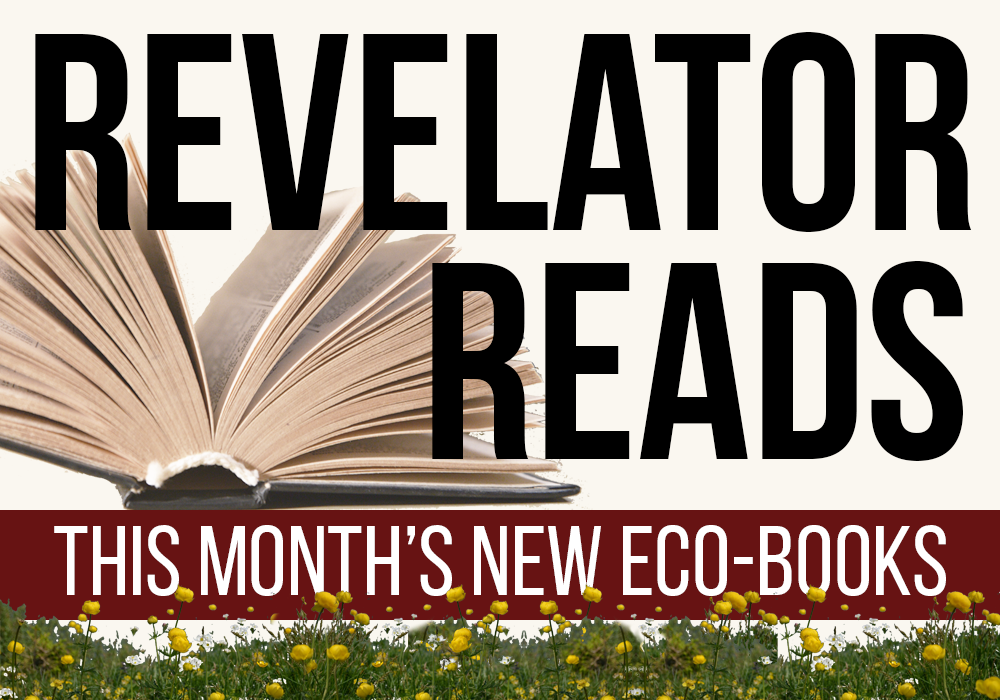 But what if your local beach is polluted, flooded, plagued with invasive species or just too darn hot?
But what if your local beach is polluted, flooded, plagued with invasive species or just too darn hot?
No matter where you find the time and place to read this summer, let’s make it a season of protecting those beaches — and other important sites and species around the planet.
We’ve got the word on 14 new environmental books — all released in May or June of this year — by an astounding collection of writers. They celebrate the natural world and cover some tough topics, but they offer you the insight and inspiration to keep you focused on making this a better, safer Earth — whether you’re on the beach this summer or not.
The High Sierra: A Love Story
by Kim Stanley Robinson
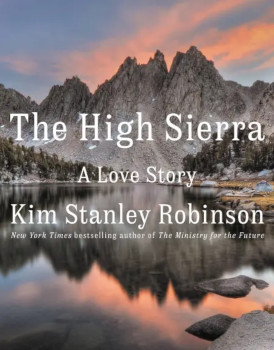 Our take: Sometimes we need a science fiction writer to remind us of the beauty (and fragility) of reality. This book doesn’t focus as much on the threats of climate change as Robinson’s recent articles and novels, but it serves as a celebration of what we could lose.
Our take: Sometimes we need a science fiction writer to remind us of the beauty (and fragility) of reality. This book doesn’t focus as much on the threats of climate change as Robinson’s recent articles and novels, but it serves as a celebration of what we could lose.
From the publisher: “Over the course of a vivid and dramatic narrative, Robinson describes the geological forces that shaped the Sierras and the history of its exploration, going back to the indigenous peoples who made it home and whose traces can still be found today. He celebrates the people whose ideas and actions protected the High Sierra for future generations. He describes uniquely beautiful hikes and the trails to be avoided. Robinson’s own life-altering events, defining relationships, and unforgettable adventures form the narrative’s spine. And he illuminates the human communion with the wild and with the sublime, including the personal growth that only seems to come from time spent outdoors.”
The Hawk’s Way: Encounters With Fierce Beauty
by Sy Montgomery
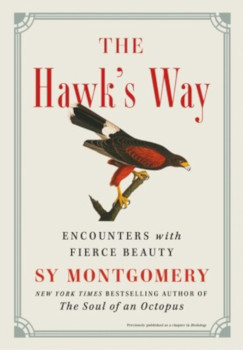 Our take: Few things fill me with more joy than the sight of a hawk slowly circling overhead, hunting for something to eat. This book will help you see the world through a bird of prey’s eyes and remind you what’s worth saving.
Our take: Few things fill me with more joy than the sight of a hawk slowly circling overhead, hunting for something to eat. This book will help you see the world through a bird of prey’s eyes and remind you what’s worth saving.
From the publisher: “[Hawks] are deeply emotional animals, quick to show anger and frustration, and can hold a grudge for years. But they are also loyal and intensely aware of their surroundings. In this mesmerizing account, featuring sixteen pages of gorgeous color photographs, Sy passionately and vividly reveals the wonderous world of hawks and what they can teach us about nature, life and love.”
Generation Dread: Finding Purpose in an Age of Climate Crisis
by Britt Wray
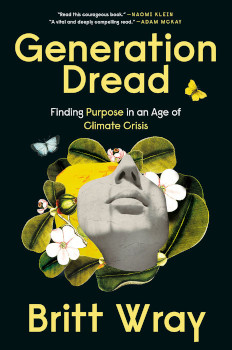 Our take: Buddhist teacher Thich Nhat Hanh wrote, “The only way to ease our fear and be truly happy is to acknowledge our fear and look deeply at its source. Instead of trying to escape from our fear, we can invite it up to our awareness and look at it clearly and deeply.” This book aims to help readers turn their fear of climate change into positive action.
Our take: Buddhist teacher Thich Nhat Hanh wrote, “The only way to ease our fear and be truly happy is to acknowledge our fear and look deeply at its source. Instead of trying to escape from our fear, we can invite it up to our awareness and look at it clearly and deeply.” This book aims to help readers turn their fear of climate change into positive action.
From the publisher: “The first crucial step toward becoming an engaged steward of the planet is connecting with our climate emotions, seeing them as a sign of humanity, and learning how to live with them. We have to face and value eco-anxiety, Wray argues, before we can conquer the deeply ingrained, widespread reactions of denial and disavowal that have led humanity to this alarming period of ecological decline.”
Red Leviathan: The Secret History of Soviet Whaling
by Ryan Tucker Jones
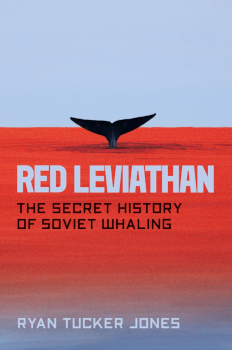 Our take: From death comes life? I picked up this book ready to find another reason to dislike Russian government — and I got it, as Soviet whaling in the last century pushed many species closer to extinction — but I also learned how scientists and the public helped turn things around, from wholesale slaughter to critical conservation.
Our take: From death comes life? I picked up this book ready to find another reason to dislike Russian government — and I got it, as Soviet whaling in the last century pushed many species closer to extinction — but I also learned how scientists and the public helped turn things around, from wholesale slaughter to critical conservation.
From the publisher: “Jones compellingly describes the ultimate scientific irony: Today’s cetacean studies benefited from Soviet whaling, as Russian scientists on whaling vessels made key breakthroughs in understanding whale natural history and behavior. And in a final twist, Red Leviathan reveals how the Soviet public began turning against their own country’s whaling industry, working in parallel with Western environmental organizations like Greenpeace to help end industrial whaling — not long before the world’s whales might have disappeared altogether.”
A Clouded Leopard in the Middle of the Road: New Thinking About Roads, People and Wildlife
by Darryl Jones
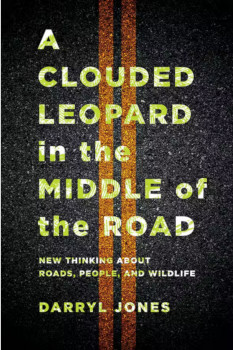 Our take: Road ecology is having its moment. As new roads carve scars through the Amazon, Africa and at-risk habitats around the world, books like this help us to understand the damage they do — and the ways we can mitigate the problems they create.
Our take: Road ecology is having its moment. As new roads carve scars through the Amazon, Africa and at-risk habitats around the world, books like this help us to understand the damage they do — and the ways we can mitigate the problems they create.
From the publisher: “One of the most ubiquitous indicators of human activity, roads typically promise development and prosperity. Yet they carry with them the threat of disruption to both human and animal lives. Jones surveys the myriad, innovative ways stakeholders across the world have sought to reduce animal-vehicle collisions and minimize road-crossing risks for wildlife, including efforts undertaken at the famed fauna overpasses of Banff National Park, the Singapore Eco-Link, ‘tunnels of love’ in the Australian Alps and others.”
The Greatest Polar Expedition of All Time: The Arctic Mission to the Epicenter of Climate Change
by Markus Rex
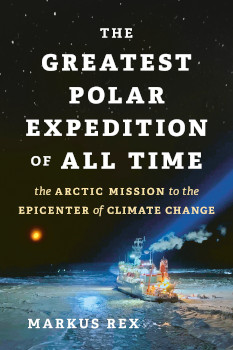 Our take: The closest thing to a traditional beach read on our list, this book offers a thrilling and harrowing account of a dangerous mission to discover the information we need to save the planet.
Our take: The closest thing to a traditional beach read on our list, this book offers a thrilling and harrowing account of a dangerous mission to discover the information we need to save the planet.
From the publisher: “Rex begins with life aboard the Polarstern, a powerful icebreaker ship that is frozen into fragile ice and carried across the Arctic by the Transpolar Drift. Away from the rest of the world, the team prepares for life under brutal conditions, constructing ‘cities’ and ‘towns’ on the ice where they will study the Arctic ecosystem, its atmosphere, ocean, sea ice and more. A terrifying feat that had never been attempted before, the team of hundreds of scientists perform their research during terrifying storms, cracking ice floes, frostbite, and even quarantines as Covid-19 sweeps the globe.”
Wild by Design: The Rise of Ecological Restoration
by Laura J. Martin
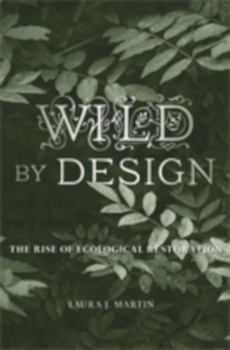 Our take: As efforts to protect 30-50% of the planet move forward, restoring the damage we’ve done is more important than ever.
Our take: As efforts to protect 30-50% of the planet move forward, restoring the damage we’ve done is more important than ever.
From the publisher: “Restoration’s past provides vital knowledge for climate change policy. But Martin also offers something more — a meditation on what it means to be wild and a call for ecological restoration that is socially just.”
Read our interview with Martin here.
A Road Running Southward: Following John Muir’s Journey through an Endangered Land
by Dan Chapman
 Our take: Muir has a troubled legacy, but this book is less about him and more about the environmental scars running through the modern U.S. South, damage that stands in stark contrast to the region’s unparalleled biodiversity.
Our take: Muir has a troubled legacy, but this book is less about him and more about the environmental scars running through the modern U.S. South, damage that stands in stark contrast to the region’s unparalleled biodiversity.
From the publisher: “Veteran Atlanta reporter Dan Chapman, distressed by sprawl-driven environmental ills in a region he loves, recreated Muir’s journey to see for himself how nature has fared since Muir’s time. Channeling Muir, he uses humor, keen observation and a deep love of place to celebrate the South’s natural riches. But he laments that a treasured way of life for generations of Southerners is endangered as long-simmering struggles intensify over misused and dwindling resources. Chapman seeks to discover how Southerners might balance surging population growth with protecting the natural beauty Muir found so special.”
Embrace Fearlessly the Burning World
by Barry Lopez
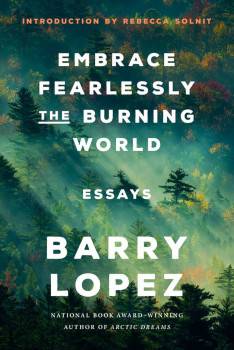 Our take: This posthumously published essay collection cements Lopez’s legacy as one of nature’s most important voices — and he still has a lot to teach us.
Our take: This posthumously published essay collection cements Lopez’s legacy as one of nature’s most important voices — and he still has a lot to teach us.
From the publisher: “An ardent steward of the land, fearless traveler, and unrivaled observer of nature and culture, Barry Lopez died after a long illness on Christmas Day 2020. The previous summer, a wildfire had consumed much of what was dear to him in his home place and the community around it — a tragic reminder of the climate change of which he’d long warned.”
Why Sharks Matter: A Deep Dive With the World’s Most Misunderstood Predator
by David Shiffman
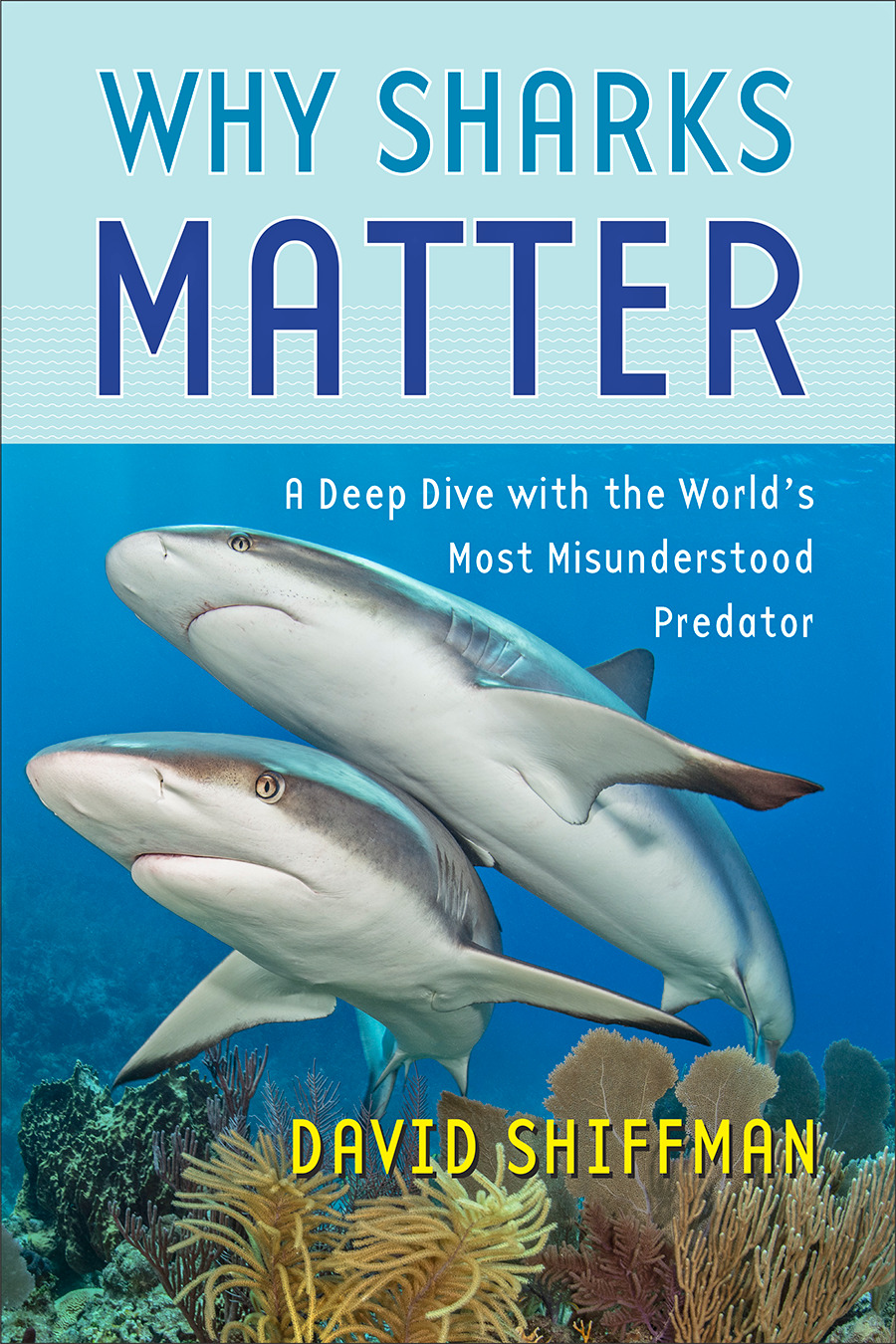 Our take: Because they’re cool? Shiffman, a shark scientist and frequent Revelator contributor, delivers the book he was born to write.
Our take: Because they’re cool? Shiffman, a shark scientist and frequent Revelator contributor, delivers the book he was born to write.
From the publisher: “Exploring the core tenets of shark conservation science and policy, Shiffman synthesizes decades of scientific research and policymaking, weaving it into a narrative full of humor and adventure. Touching on everything from Shark Week to shark fin soup, overfishing to marine sanctuaries, Shiffman reveals why sharks are in trouble, why we should care and how we can save them.”
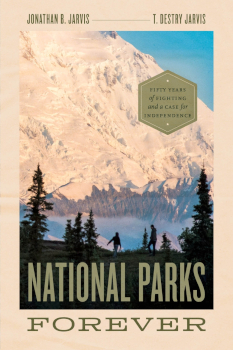 National Parks Forever: Fifty Years of Fighting and a Case for Independence
National Parks Forever: Fifty Years of Fighting and a Case for Independence
by Jonathan Jarvis and T. Destry Jarvis
Our take: Painful history + a roadmap for change = a compelling book.
From the publisher: “Two leaders of the National Park Service provide a front-row seat to the disastrous impact of partisan politics over the past 50 years — and offer a bold vision for the parks’ future.”
The World As We Knew It: Dispatches From a Changing Climate
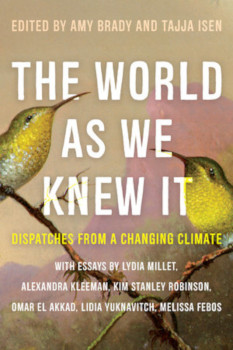 Edited by Amy Brady and Tajja Isen
Edited by Amy Brady and Tajja Isen
Our take: This anthology collects stunning and heartbreaking first-person accounts of a world in crisis. We should all join these authors in sharing stories of the Anthropocene in our backyards.
From the publisher: “Nineteen leading literary writers from around the globe offer timely, haunting first-person reflections on how climate change has altered their lives. With essays by: Lydia Millet, Alexandra Kleeman, Kim Stanley Robinson, Omar El Akkad, Lidia Yuknavitch, Melissa Febos and more.”
Tree Thieves: Crime and Survival in North America’s Woods
by Lyndsie Bourgon
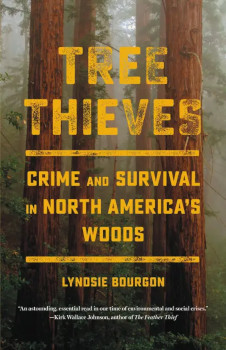 Our take: Elephants aren’t the only living things killed and stolen by poachers. This deep dive of investigative journalism takes us into the forests and a crisis that receives far too little attention — but also shines a light on the people that protected territories often leave behind.
Our take: Elephants aren’t the only living things killed and stolen by poachers. This deep dive of investigative journalism takes us into the forests and a crisis that receives far too little attention — but also shines a light on the people that protected territories often leave behind.
From the publisher: “Bourgon takes us deep into the underbelly of the illegal timber market. As she traces three timber poaching cases, she introduces us to tree poachers, law enforcement, forensic wood specialists, the enigmatic residents of former logging communities, environmental activists, international timber cartels and Indigenous communities along the way.”
Bitch: On the Female of the Species
by Lucy Cooke
 Our take: Provocative title, stunning book.
Our take: Provocative title, stunning book.
From the publisher: “Since Charles Darwin, evolutionary biologists have been convinced that the males of the animal kingdom are the interesting ones — dominating and promiscuous, while females are dull, passive and devoted. In Bitch, Cooke tells a new story. Whether investigating same-sex female albatross couples that raise chicks, murderous mother meerkats, or the titanic battle of the sexes waged by ducks, Cooke shows us new evolutionary biology, one where females can be as dynamic as any male. This isn’t your grandfather’s evolutionary biology. It’s more inclusive, truer to life and, simply, more fun.”
Previously in The Revelator:
Ten New Environmental Books Offering Inspiration, Insight and Ideas
![]()

